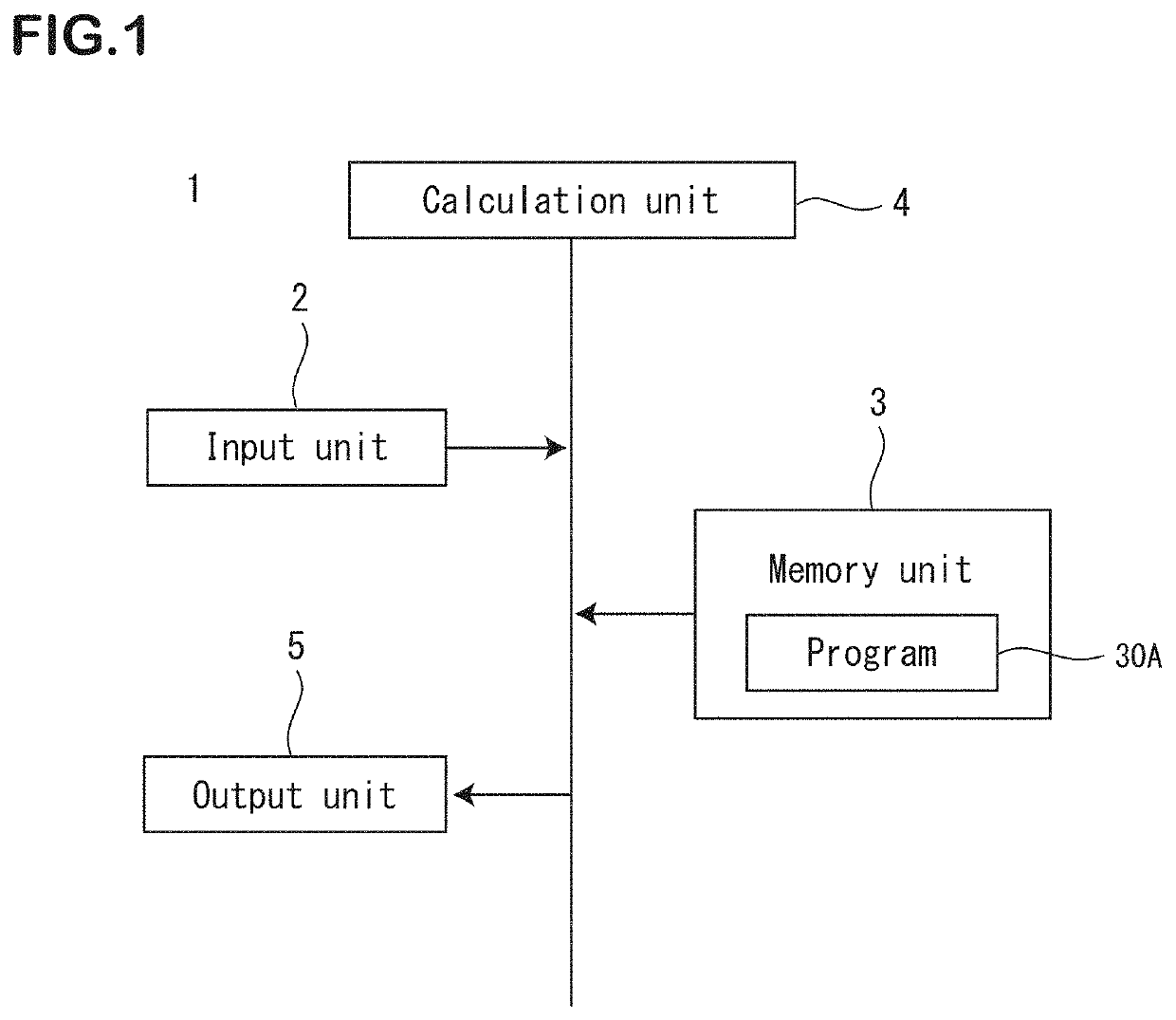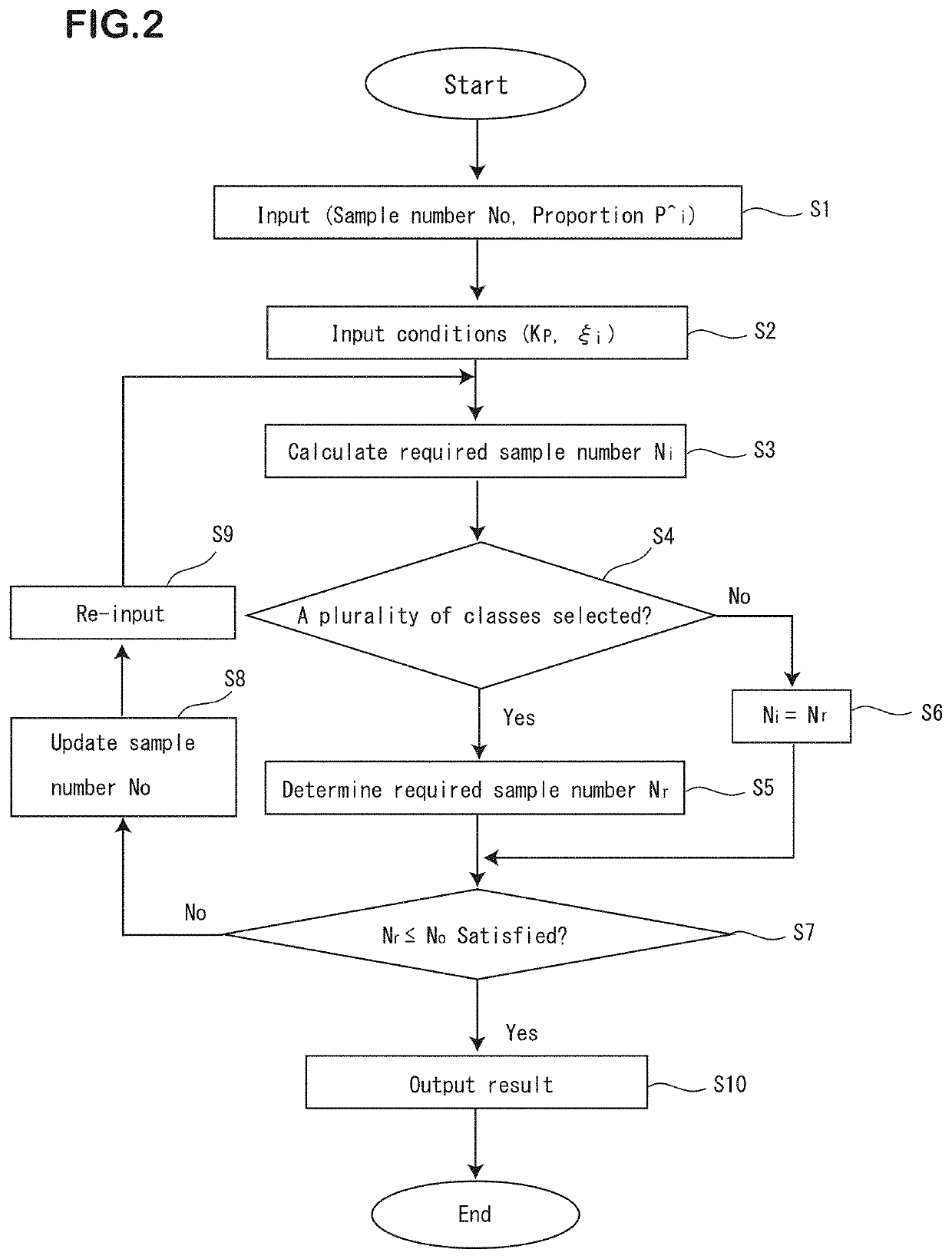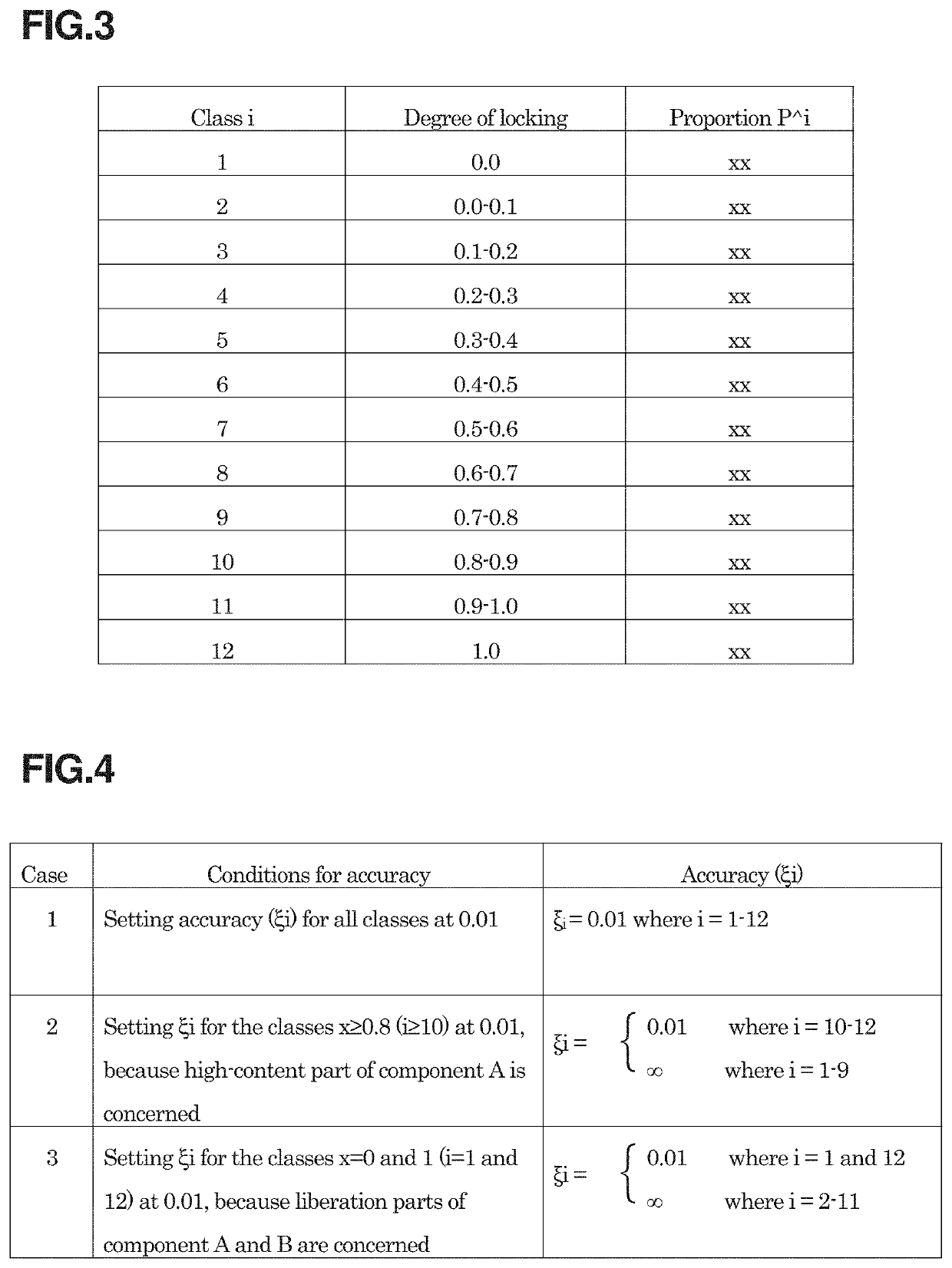Device, program, and method for determining number of samples required for measurement, and device, program and method for estimating measurement accuracy
a technology which is applied in the field of estimating measurement accuracy and determining the number of samples required for measurement, and estimating the accuracy of the device, the program and the method, can solve the problems of inability to predict the magnitude of the error, the inability to use all of the ore particles belonging to the population, and the inability to use all of the samples
- Summary
- Abstract
- Description
- Claims
- Application Information
AI Technical Summary
Benefits of technology
Problems solved by technology
Method used
Image
Examples
embodiment 1-1
[0071]Referring to FIG. 1, the following describes the configuration of Embodiment 1-1 of the present invention. Embodiment 1-1 relates to one embodiment of a device for determining the number of samples required for measurement of the present invention. FIG. 1 is a block diagram showing the configuration of the device for determining the number of samples required for measurement (hereinafter called a required sample-number determination device) according to Embodiment 1-1.
[0072]The required sample-number determination device 1 is an information processing device configured to determine the minimum required sample number for measurement of discrete materials that is required for the estimation of the population proportion with a target accuracy ξi. As shown in FIG. 1, this device includes an input unit 2, a memory unit 3, a calculation unit 4, and an output unit 5.
[0073]The input unit 2 includes well-known information input means, such as for key inputting, touch inputting, or a da...
embodiment 1-2
[0106]Referring to FIG. 5, the following describes the configuration of Embodiment 1-2 of the present invention. Embodiment 1-2 relates to one embodiment of a required sample-number determination device of the present invention. FIG. 5 is a block diagram showing the configuration of the required sample-number determination device according to Embodiment 1-2.
[0107]As shown in FIG. 5, the required sample-number determination device 10 stores a program 30B instead of the program 30A of the required sample-number determination device 1. The following describes the operation of the required sample-number determination device 10 in accordance with the program 30B. Since other configuration is similar to that of the required sample-number determination device 1, their descriptions are omitted.
[0108]Unlike the required sample-number determination device 1 dealing with the case where all of the samples have the same weight, the required sample-number determination device 10 deals with the ca...
embodiment 2
[0123]Referring to FIG. 6, the following describes the configuration of Embodiment 2 of the present invention. Embodiment 2 relates to one embodiment of a device for estimating measurement accuracy (hereinafter called a measurement-accuracy estimation device) of the present invention. FIG. 6 is a block diagram showing the configuration of the measurement-accuracy estimation device according to Embodiment 2.
[0124]As shown in FIG. 6, the measurement-accuracy estimation device 20 stores a program 30C instead of the program 30A of the required sample-number determination device 1. The following describes the operation of the measurement-accuracy estimation device 20 in accordance with the program 30C. Other configuration is similar to that of the required sample-number determination device 1, and their descriptions are omitted.
[0125]For the statistical data on the already measured physical amount, the number of measured samples also being known, the measurement-accuracy estimation devic...
PUM
| Property | Measurement | Unit |
|---|---|---|
| volume | aaaaa | aaaaa |
| weight | aaaaa | aaaaa |
| density | aaaaa | aaaaa |
Abstract
Description
Claims
Application Information
 Login to view more
Login to view more - R&D Engineer
- R&D Manager
- IP Professional
- Industry Leading Data Capabilities
- Powerful AI technology
- Patent DNA Extraction
Browse by: Latest US Patents, China's latest patents, Technical Efficacy Thesaurus, Application Domain, Technology Topic.
© 2024 PatSnap. All rights reserved.Legal|Privacy policy|Modern Slavery Act Transparency Statement|Sitemap



